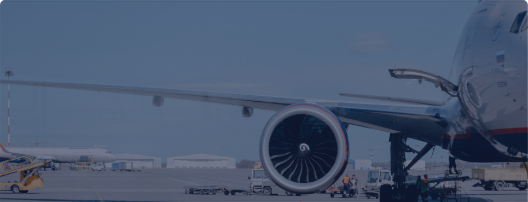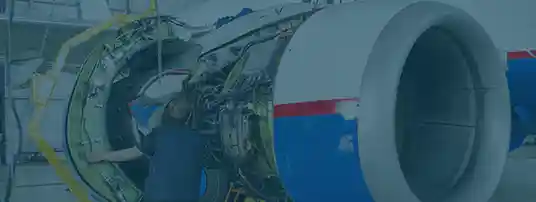Posted on October 24, 2023 linda strong aviation
It is easy to forget the intricate systems and components that make modern aviation possible. Avionic components, often referred to as the "brains" of an aircraft, play a critical role in ensuring the safety and functionality of every flight. In this blog, we will delve into avionic components, discussing common parts such as the Global Positioning System (GPS), weather system, multifunction displays, and more.
The GPS in modern aircraft is an integral component that enables point-to-point navigation with exceptional accuracy. GPS receivers in aircraft are connected to a network of satellites, allowing pilots to determine their exact position and navigate along predefined flight paths. Additionally, the GPS system is invaluable for both en-route and terminal navigation, making air travel safer and more efficient. Whether it is a short domestic flight or a long-haul international journey, the GPS system is always there, silently guiding aircraft.
Weather can be a formidable adversary in aviation as turbulence, thunderstorms, and other meteorological challenges are common occurrences. Avionic components include sophisticated weather systems that provide pilots with real-time weather information, and these systems gather data on temperature, humidity, wind speed, and precipitation. By accessing this data, pilots can make informed decisions on flight paths and altitudes to ensure a smoother and safer journey. In brief, modern weather systems contribute significantly to on-time departures and the overall passenger experience.
In the cockpit of modern aircraft, you will find multifunction displays (MFDs) that serve as the central hub for avionic data, offering a wealth of information in a clear and organized manner. MFDs can show data from various avionic components, including navigation charts, engine performance metrics, weather updates, and more. With touch-screen technology, pilots can quickly access and manipulate this information, enhancing their ability to monitor an aircraft's systems and surroundings.
Autopilot systems are another vital avionic component that significantly reduces a pilot's workload. While these systems do not mean an aircraft can fly itself without human intervention, they can manage various aspects of flight, such as maintaining a stable altitude, heading, and speed. This allows pilots to focus on other critical tasks, such as communication with air traffic control and monitoring for unexpected developments. Moreover, autopilot systems are designed to enhance safety, improve fuel efficiency, and reduce the mental and physical fatigue of flight crews.
Communication is essential in aviation as pilots need to stay in touch with air traffic controllers, other aircraft, and ground personnel throughout a flight. Consequently, avionic components include a suite of communication systems, including radios, transponders, and satellite communication devices. These avionic components ensure seamless and reliable communication, even when flying over remote or oceanic areas, contributing to safety and efficiency in the skies by preventing mid-air collisions and facilitating the exchange of vital information.
Navigating through the complex network of airspace, waypoints, and air routes requires precision and accuracy. To achieve this exactness, aircraft navigation systems, such as Inertial Navigation Systems (INS) and VOR/DME, help pilots plot their course and determine their position. These systems work in conjunction with the GPS to provide redundancy and ensure an aircraft's ability to navigate in various conditions.
To ensure the safety of the flight, avionic components include a wide array of sensors and instrumentation. These devices continuously monitor the aircraft's performance, including parameters like airspeed, altitude, engine health, and fuel status. If any parameter goes beyond safe limits, the pilot is immediately alerted, allowing for quick corrective action. This real-time monitoring is crucial for identifying and addressing potential issues before they become critical.
In summary, the realm of avionic components is a fascinating and critical aspect of modern aviation. GPS systems, weather systems, multifunction displays, autopilot systems, communication systems, navigation systems, and sensors all work in harmony to ensure the safety and efficiency of every flight. These avionic components are not just individual parts; they are interconnected elements of a complex and highly reliable system. With a better understanding of these components, you can ensure that the proper purchasing decisions and maintenance practices are carried out.
For all the aircraft parts you require for carrying out operations, look no further than Aviation Sourcing Solutions. As we are dedicated to rigorous quality assurance practices, we do all within our power to guarantee the best products with each purchase. One way we uphold this is through the comprehensive vetting of every manufacturer that we work with, as well as the inspection and testing of countless offerings to ensure fit, form, and function prior to shipment. With this in mind, contact us today, and see how we can save you time and money on all that you need.

 The only independent
The only independent



“We Proudly Support Intrepid Fallen Heroes Fund that serves United States Military Personal experiencing the Invisible Wounds of War : Traumatic Brain Injury (TBI) and Post Traumatic Stress (PTS). Please visit website (www.fallenheroesfund.org) and help in their valiant effort”.
We Hope that You Will Visit Us Again the Next Time You Need Aircraft Parts and Make Us Your Strategic Purchasing Partner.
Request for Quote